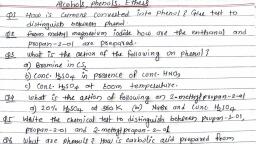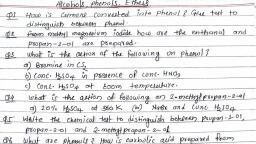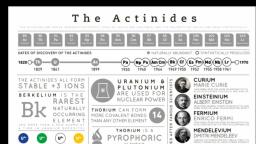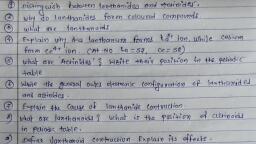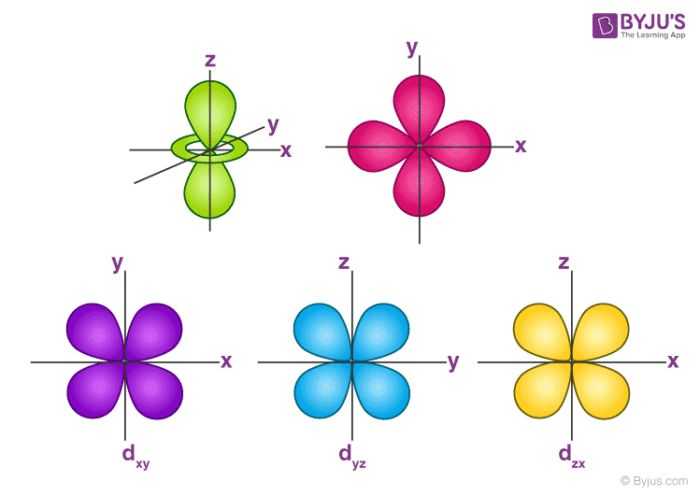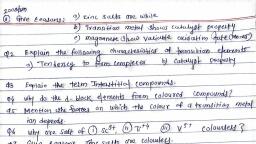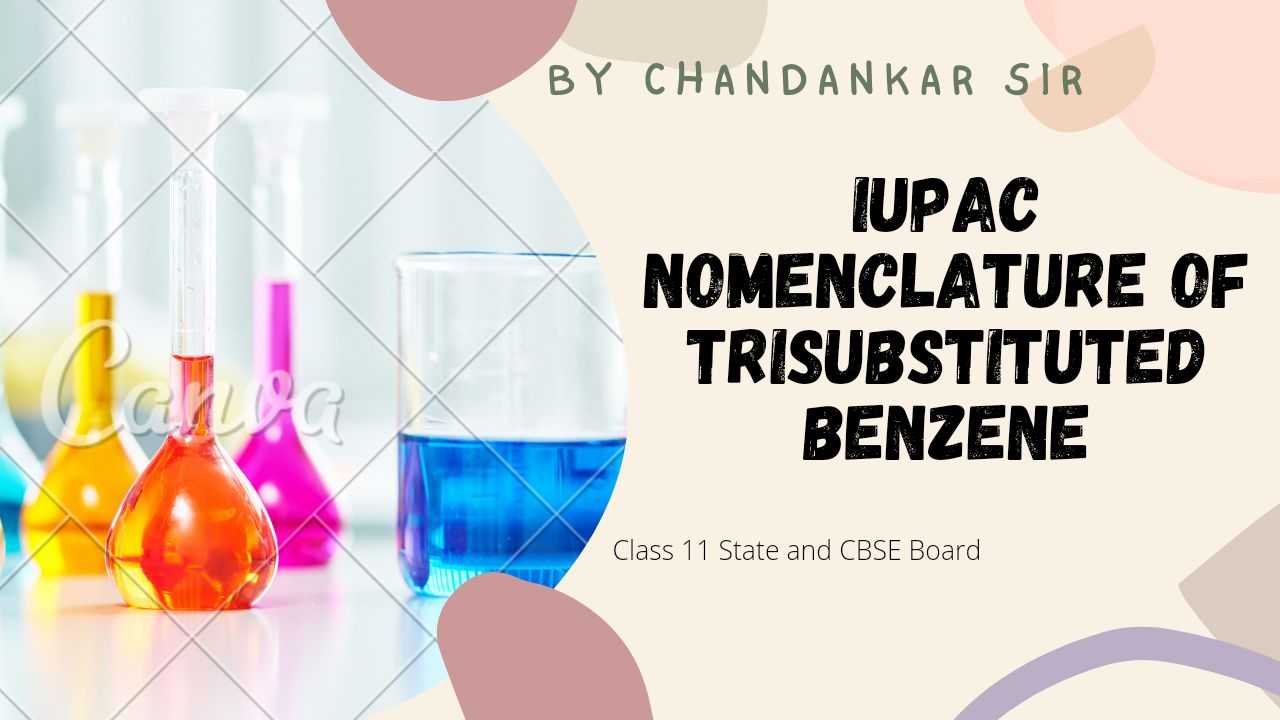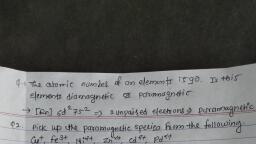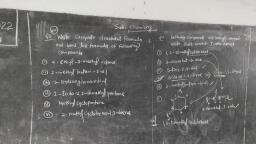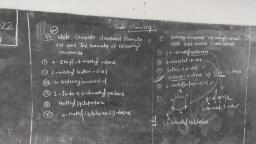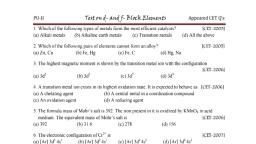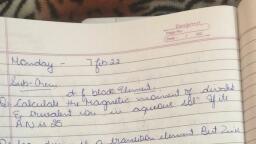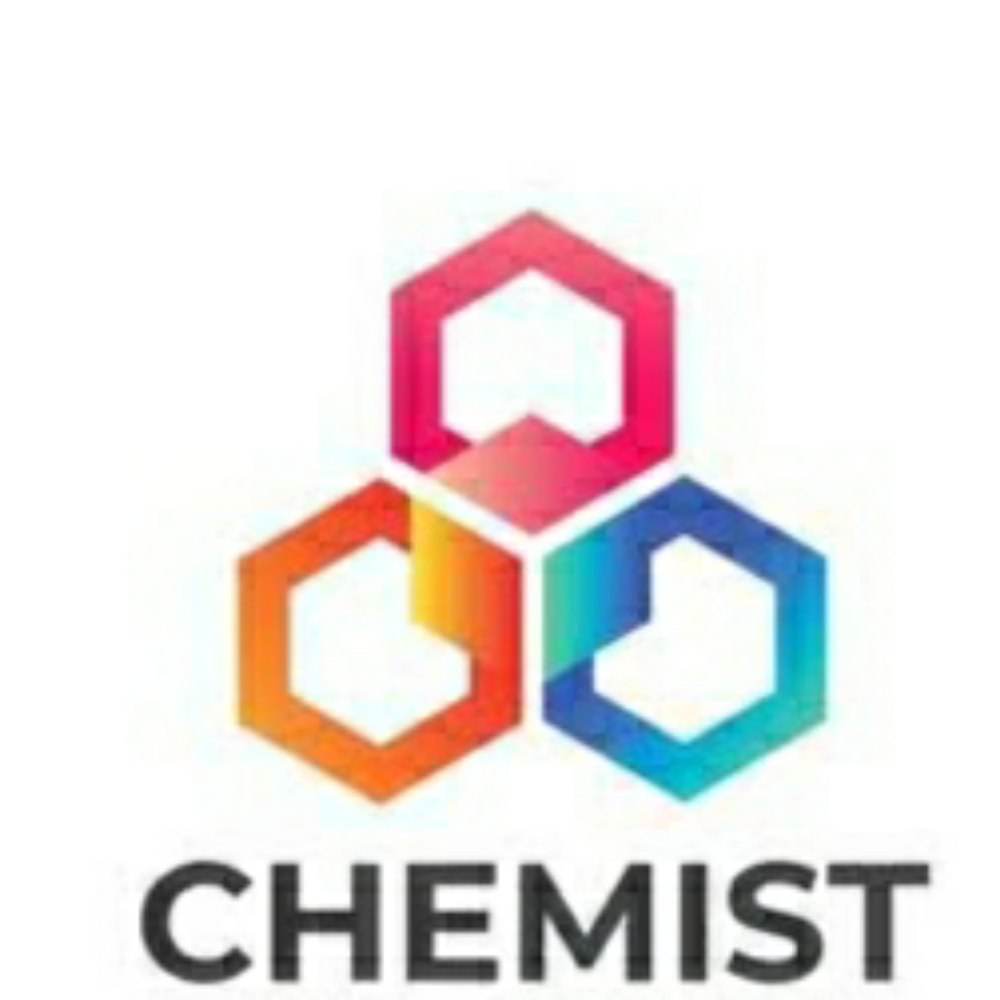Question 1 :
<p class="wysiwyg-text-align-left"><span class="wysiwyg-font-size-small"><span class="wysiwyg-font-size-small">Number of d-electrons in chromium of $$[Cr(H_{2}O)_{6}]^{+3}$$ ion are:</p>
Question 2 :
A transition element X has a configuration $$[Ar]3d^4$$, in its +3 oxidation state. Its atomic number is:
Question 3 :
<span class="wysiwyg-font-size-small"><span class="wysiwyg-font-size-small"><p class="wysiwyg-text-align-left">Which one of the following ionic species will impart colour to an aqueous solution?</p>
Question 5 :
<span class="wysiwyg-font-size-small"><span class="wysiwyg-font-size-small"><p class="wysiwyg-text-align-left">Catalytic activity of transition elements and their compounds is due to their _______.</p>
Question 6 :
<span class="wysiwyg-font-size-small"><span class="wysiwyg-font-size-small"><p class="wysiwyg-text-align-left">Which one of the transition metal ions have no unpaired electrons?</p>
Question 7 :
<span class="wysiwyg-font-size-small"><span class="wysiwyg-font-size-small"><p class="wysiwyg-text-align-left">Which one of the following ion exhibits colour in aqueous solution ?      </p>
Question 8 :
<span class="wysiwyg-font-size-small"><span class="wysiwyg-font-size-small"><span class="wysiwyg-font-size-small"><p class="wysiwyg-text-align-left">Among the following outermost configuration of metals, which shows the highest oxidation state:</p><b><span class="wysiwyg-font-size-small"><span class="wysiwyg-font-size-small"></b>
Question 9 :
<span class="wysiwyg-font-size-small"><span class="wysiwyg-font-size-small"><p class="wysiwyg-text-align-left">The highest magnetic moment is shown by the transition metal ion with which of the following outermost electronic configuration?</p>
Question 10 :
Titanium oxide is added in interior paints for walls of rooms, halls and galleries to give :
Question 12 :
Transitional elements exhibit variable valencies because they release electrons from the following orbits :<br/>
Question 13 :
Which one of the following statement is true for transition elements?
Question 14 :
<span class="wysiwyg-font-size-small"><span class="wysiwyg-font-size-small"><p class="wysiwyg-text-align-left">The element that acts as a good catalyst for several reactions has a atomic number:</p>
Question 16 :
<span class="wysiwyg-font-size-small"><span class="wysiwyg-font-size-small"><p class="wysiwyg-text-align-left">The magnetic moment of an ion is close to $$36\times 10^{-24}$$Joule /Tesla. The number of unpaired electrons of the ion are ____________.</p>
Question 18 :
<span class="wysiwyg-font-size-small"><span class="wysiwyg-font-size-small"><p class="wysiwyg-text-align-left">Which of the following statement regarding transition elements is incorrect?</p>
Question 21 :
The catalytic activity of transition metals and their compounds is ascribed mainly to:<br/>
Question 22 :
<span class="wysiwyg-font-size-small"><span class="wysiwyg-font-size-small"><p>The oxidation state of Fe in browns ring complex $$[Fe(H_{2}O)_{5}NO^{+}]SO_{4}$$ is:</p>
Question 23 :
<span class="wysiwyg-font-size-small"><span class="wysiwyg-font-size-small"><p class="wysiwyg-text-align-left">The magnetic moment of an ion in its +3 oxidation state is 3.85 BM. The number of unpaired electrons present in the ion is _____________.<br/></p>
Question 25 :
What is the correct order of the covalent size of the following?<br/><br/>Cr  ______  Mn
Question 26 :
Select the correct order with respect to paramagnetic property of the ions.
Question 27 :
The melting point of copper is higher than that of zinc because:
Question 30 :
The transitional metal which form green compound in +3 oxidation state and yellow-orange compound in +6 oxidation state is

